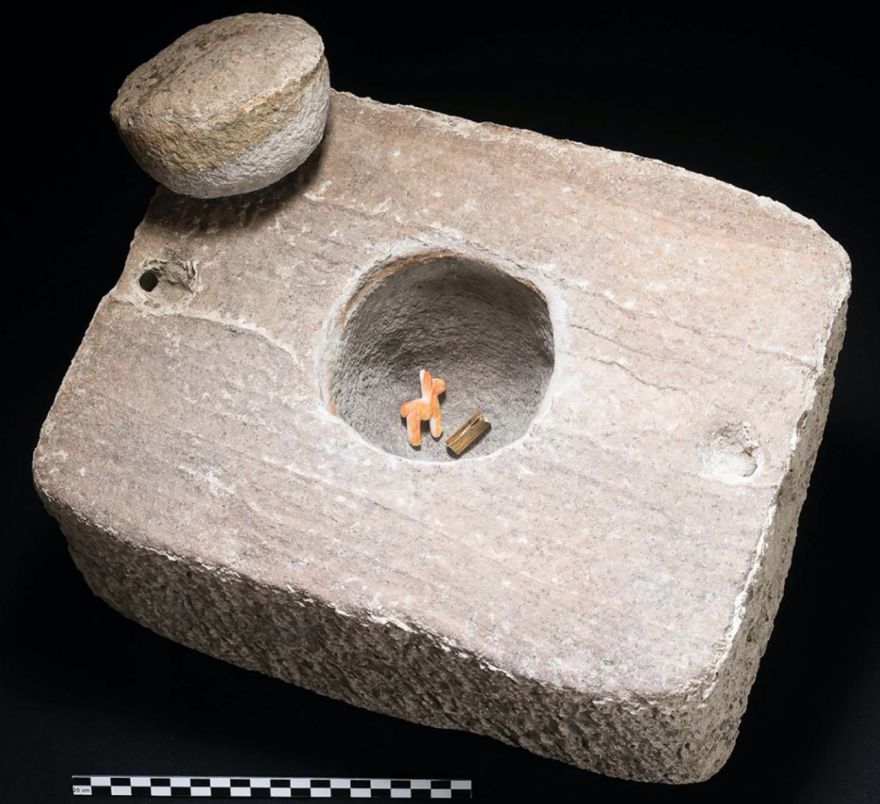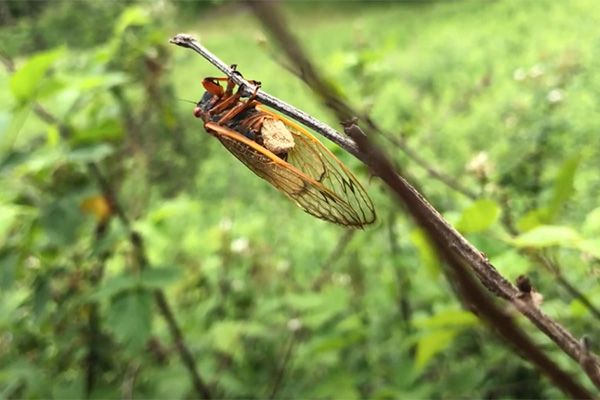Neatorama |
- Broadway’s Hidden Gems
- This Piranha Plant Will Light Up Your Day
- A Tiny Llama For The Great Inca Gods
- Has Natural Language Processing Been Chasing The Wrong Goal The Whole Time?
- Managing Regrets
- LED Flashlights Make Hunting Easier, But At What Cost?
- Number Fever: The Pepsi Contest That Became a Deadly Fiasco
- Cat Receives Mail
- How Many Habitable Planets Can One Star Have?
- This Cold War Bunker and Missile Silo Could Be Yours
- Watch This Woman Swim a Lap While Balancing a Glass of Milk on Her Head
- An Honest Trailer for <i>Starship Troopers</i>
- Fungus Controls Behavior of Zombie Cicadas
- The Upside of Herpes
- Your Hair Can Record Your Diet
| Posted: 06 Aug 2020 02:19 AM PDT
Broadway houses some of Manhattan's most celebrated structures like the Custom House, the Woolworth Building, City Hall, and the Flatiron. But the famous avenue is also home to other buildings that deserve a closer inspection! Check out William J. Hennessey's list of Broadway's hidden gems. The next time you're on Broadway, you should also look for these structures. image via The Daily Beast |
| This Piranha Plant Will Light Up Your Day Posted: 05 Aug 2020 11:29 PM PDT
Usually found thriving inside Warp Pipes, the Piranha Plants wait for the perfect opportunity to chomp down the heroes of the Mushroom Kingdom, Mario and Luigi. But this Piranha Plant is different from all of its kind. It doesn't bite, and it's friendly towards people. Paladone's Piranha Plant lamp comes with its mouth wide open, and looks intimidating as it pokes its head out of a drain pipe. Its green stalk is poseable, so you can bend it to your whim, and aim its light where you want it. Rather than living organic matter, this Piranha Plant is made from plastic, and it's teeth aren't sharp enough to break skin. The plant can go anywhere too, since it runs on battery or USB power. (Image Credit: Technabob) |
| A Tiny Llama For The Great Inca Gods Posted: 05 Aug 2020 11:29 PM PDT
Found in the border between Peru and Bolivia in the Andes Mountains is one of the largest lakes in South America: Lake Titicaca. For the Inca and the Tiwanaku (the people that lived there before the Inca), the lake, which is home to still and reflective waters, is a sacred lake. Currently, the lake is filled with "sunken sacrifices from centuries ago." After years of searching, archaeologists have now retrieved the first underwater offering not yet damaged or looted by opportunists: a box of volcanic rock, submerged around 500 years ago. Upon opening this tightly-sealed sacrifice in front of local Indigenous leaders, the research team discovered an ancient llama, carved from the shell of a spiny mollusc called a spondylus from Ecuador, and a furled sheet of gold, thought to be part of a bracelet. If historical accounts from the invading Spanish are right, the box may have once even held the blood of children or animals, although no human remains have been found in the lake to date. Scientists believe that boxes such as this one are lowered on the lake as some sort of sacrifice to the gods. More details about this one over at ScienceAlert. (Image Credit: Teddy Seguin/Université libre de Bruxelles/ ScienceAlert) |
| Has Natural Language Processing Been Chasing The Wrong Goal The Whole Time? Posted: 05 Aug 2020 11:29 PM PDT
Jesse Dunietz was surprised as he attended the 58th Annual Meeting of the Association of Computational Linguistics. For decades, natural-language processing (NLP), the AI branch that specializes in creating systems that analyze the human language, has been measuring the ability of these systems through benchmark data sets. Much of today's reading comprehension research entails carefully tweaking models to eke out a few more percentage points on the latest data sets. "State of the art" has practically become a proper noun: "We beat SOTA on SQuAD by 2.4 points!" But during this year's meeting, Dunietz felt something different. Attendees' conversations were unusually introspective about the core methods and objectives of natural-language processing (NLP), the branch of AI focused on creating systems that analyze or generate human language. Papers in this year's new "Theme" track asked questions like: Are current methods really enough to achieve the field's ultimate goals? What even are those goals? For Dunietz and his colleagues, the field needs a " transformation, not just in system design, but in a less glamorous area: evaluation." More details about this over at Technology Review. (Image Credit: insspirito/ Pixabay) |
| Posted: 05 Aug 2020 11:29 PM PDT
We all have regrets in our lives. It might be regret in choosing the wrong degree program at our university, regret in making a financial decision that resulted in a huge loss, or regret in a relationship that should have been ended way earlier before things got worse. Regrets come with a lot of "what if" questions and "I should have done this" statements, as well as pain that could either cause us to grow and move forward, or to shrink and stay stuck. Of course, all of us want to grow, but how do we do it properly? Psychology professor Shawn M. Burn gives us advice on how to deal with our regrets. See her tips over at Psychology Today. (Image Credit: sir5life0/ Pixabay) |
| LED Flashlights Make Hunting Easier, But At What Cost? Posted: 05 Aug 2020 11:29 PM PDT
For decades, humans have been using light-emitting devices such as flashlights in order to hunt for prey. Apparently, sudden light causes confusion to animals and makes them freeze. In the past, however, flashlights with incandescent bulbs quickly run out of power, which makes it a costly tool for the hunter. It also makes hunting more difficult. But with the current LED technology, which can emit the same light with less power, hunters have found it easier to hunt. There is a downside, however. Cheap, powerful flashlights are allowing hunters in tropical jungles around the world to more easily kill nocturnal animals, including endangered species such as pangolins, according to a new study. Scientists warn the new technology threatens to further damage ecosystems already strained by overhunting. But for forest ecologist Robert Nasi, the problem is not the LED flashlights; it is how people use them. For example, Gabonese hunters working at night in the vast forests of the Congo reported killing threatened species, including the giant pangolin (Smutsia gigantea) and various small antelopes known as duikers. LEDs could fuel intensive hunting of the sort that can take a toll on jungle ecosystems, Nasi says. But for people hunting to feed themselves, the lights could save time, freeing them up to do other things like fish or tend crops. What are your thoughts about this one? (Image Credit: Memed_Nurrohmad/ Pixabay) |
| Number Fever: The Pepsi Contest That Became a Deadly Fiasco Posted: 05 Aug 2020 11:29 PM PDT
Read the full story of the soda pop promotion that went oh-so-wrong at Bloomberg Businessweek. -via Damn Interesting |
| Posted: 05 Aug 2020 11:28 PM PDT
|
| How Many Habitable Planets Can One Star Have? Posted: 05 Aug 2020 11:28 PM PDT
It wasn't all that long ago that the idea of other planets where humans could live was considered a fantasy. Now we have lots of data coming in from exoplanets, those outside our solar system, and they come in all sizes, shapes, and flavors. Could they support life? The common theory is that only planets in which water would be in liquid form are suitable for us to live in, and these fall into the "habitable zone." Our solar system has three such planets: Venus, Earth, and Mars. Since we can't live on Mars and Venus as they are, you can see that habitability actually depends on many factors.
Scientists have crunched the numbers to find out how many planets could be in a system's habitable zone. It depends on the size and heat of the star, and a few other factors. But the answer will have you imagining a system where people could send mail to their relatives on the next planet over. Read how it might work at Bad Astronomy. |
| This Cold War Bunker and Missile Silo Could Be Yours Posted: 05 Aug 2020 11:27 PM PDT
If you want to get really away from it all, keep the rest of the world at bay, and have plenty of space to spread out, you might be interested in a property for sale near Fairdale, North Dakota. The brutalist architecture envelopes an interior steampunk aesthetic.
From the outside, the facility looks like a 20th-century Stonehenge. Before you purchase, you should read some of its history at Atlas Obscura. Then see lots of pictures at the auction listing. The missile silos will be auctioned off on August 11. |
| Watch This Woman Swim a Lap While Balancing a Glass of Milk on Her Head Posted: 05 Aug 2020 07:51 PM PDT US Olympic swimmer Katie Ledecky demonstrates perfect body control as she swims the length of a pool while balancing a glass of chocolate milk on her head. Without the glass, it would look like an easy lap. It is only with this additional challenge that we can understand what she has managed to achieve through decades of effort. -via Born in Space |
| An Honest Trailer for <i>Starship Troopers</i> Posted: 05 Aug 2020 11:42 AM PDT
|
| Fungus Controls Behavior of Zombie Cicadas Posted: 05 Aug 2020 11:42 AM PDT
We've read plenty of horror stories from nature about animal parasites infecting other animals and causing them to behave in ways that benefit the parasite. Funguses can do that, too. The parasitic fungus Massospora will infect a male cicada and then cause it to flirt like a female cicada. When a male cicada approaches, the fungus spreads to a new, healthy host.
That's some pretty sophisticated chicanery for a fungus. You might think the fungus couldn't be too smart, or they would infect a species that didn't lay dormant for 17 years, but Massospora has adapted to that, too, which you can read about at WVU Today. -via Boing Boing |
| Posted: 05 Aug 2020 11:42 AM PDT
|
| Your Hair Can Record Your Diet Posted: 05 Aug 2020 07:04 AM PDT
If you want to know if a person prefers to eat veggies or meat, then you might consider analyzing his hair. This study published in Proceedings of the National Academy of Sciences show that chemical traces of proteins from food can be found in hair strands. "This information can be used to quantify dietary trends in ways that surveys cannot capture," says distinguished professor Jim Ehleringer, of the U's School of Biological Sciences. "We would like to see the health community begin to assess dietary patterns using hair isotope surveys, especially across different economic groups within the US." More details about this hair-splitting study over at PHYS.org. (Image Credit: RyanMcGuire/ Pixabay) |
| You are subscribed to email updates from Neatorama. To stop receiving these emails, you may unsubscribe now. | Email delivery powered by Google |
| Google, 1600 Amphitheatre Parkway, Mountain View, CA 94043, United States | |












No comments:
Post a Comment
Keep a civil tongue.